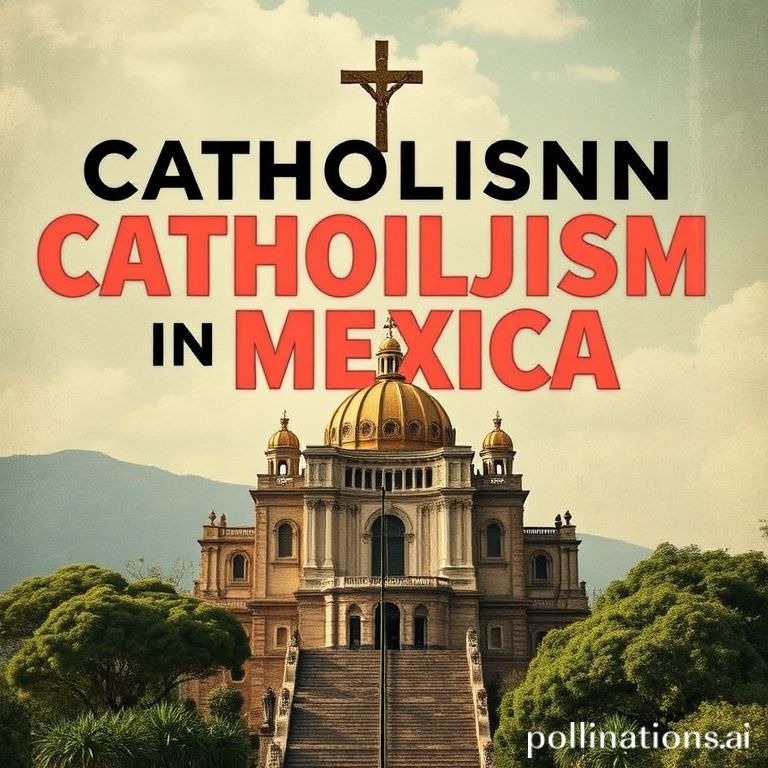Mexico, a land of vibrant culture, rich history, and stunning landscapes, is also home to a deeply ingrained Catholic faith. Catholicism isn’t just a religion here; it’s woven into the very fabric of Mexican identity, influencing everything from art and music to social customs and family values. From the grand cathedrals of major cities to the humble village chapels, the presence of the Church is undeniable, a testament to centuries of faith and tradition.
Understanding Catholicism in Mexico requires a journey through its historical roots, its unique expressions, and its ongoing influence on contemporary society. It’s a story of conquest and conversion, of syncretism and resistance, and of a faith that continues to evolve while remaining deeply connected to its past.
The Arrival of Catholicism in Mexico
Catholicism arrived in Mexico with the Spanish conquistadors in the 16th century. The encounter between the Spanish and the indigenous populations was complex and often fraught with violence. While the conquistadors sought to impose their culture and religion, the indigenous peoples initially resisted, later adapting and reinterpreting Catholic beliefs through the lens of their own spiritual traditions.
Conversion and Syncretism
The conversion of the indigenous population was a gradual process. Missionaries played a key role, learning native languages and adapting religious teachings to make them more accessible. However, the conversion was not simply a replacement of old beliefs with new ones. Instead, a process of syncretism occurred, where indigenous beliefs and practices were blended with Catholic traditions. This is evident in the veneration of certain saints who are associated with pre-Hispanic deities, and in the incorporation of indigenous rituals into Catholic celebrations.
Key Figures and Events
Several figures and events have been crucial in shaping the history of Catholicism in Mexico.
- Our Lady of Guadalupe: The apparition of Our Lady of Guadalupe in 1531 is perhaps the most significant event in Mexican Catholicism. Her image, miraculously imprinted on the cloak of Juan Diego, is a powerful symbol of Mexican identity and a source of immense devotion.
- Bartolomé de las Casas: A Dominican friar who advocated for the rights of the indigenous peoples, Las Casas was a vocal critic of the abuses committed by the Spanish colonizers.
- The Cristero War (1926-1929): This armed conflict was sparked by the anti-clerical policies of the Mexican government, which sought to restrict the role of the Church in public life. The Cristero War was a defining moment in Mexican history and had a profound impact on the relationship between the Church and the state.
Catholicism in Contemporary Mexico
Today, Catholicism remains the dominant religion in Mexico, with a significant majority of the population identifying as Catholic. While adherence to traditional practices may vary, the cultural influence of Catholicism is still strong. Religious festivals, such as Día de Muertos (Day of the Dead) and Las Posadas, are widely celebrated and reflect the blending of indigenous and Catholic traditions.
Challenges and Changes
Despite its enduring presence, Catholicism in Mexico faces several challenges in the 21st century. These include:
- Declining Church Attendance: Like in many other parts of the world, church attendance has declined in recent years, particularly among younger generations.
- Rise of Other Religions: Protestant denominations and other religious groups have gained ground in Mexico, offering alternative spiritual paths.
- Social Issues: The Church grapples with complex social issues such as poverty, violence, and inequality, seeking to provide moral guidance and support to vulnerable communities.
The Enduring Legacy
Despite these challenges, Catholicism continues to play a vital role in Mexican society. It provides a sense of community, offers solace in times of hardship, and inspires acts of charity and compassion. The architectural grandeur of its churches, the beauty of its religious art, and the richness of its traditions are all testaments to the enduring legacy of Catholicism in Mexico.
Conclusion
Catholicism in Mexico is more than just a religion; it’s a cultural heritage, a historical narrative, and a living tradition. From its origins in the Spanish conquest to its ongoing evolution in contemporary society, Catholicism has shaped the identity and experiences of generations of Mexicans. Its enduring influence can be seen in every corner of the country, a testament to the power of faith and the resilience of the human spirit.
If you found this exploration of Catholicism in Mexico insightful, share it with your friends and family! Dive deeper into Mexican culture by exploring our other articles on Life in Mexico.
IMAGE: A vibrant and colorful scene inside a Mexican church during a religious festival. Sunlight streams through stained-glass windows, illuminating parishioners dressed in traditional clothing. The altar is adorned with flowers and candles. The mood is reverent and joyful, capturing the deep faith and cultural richness of Catholicism in Mexico. Style: Realistic, with a touch of painterly impressionism, focusing on light and color.


